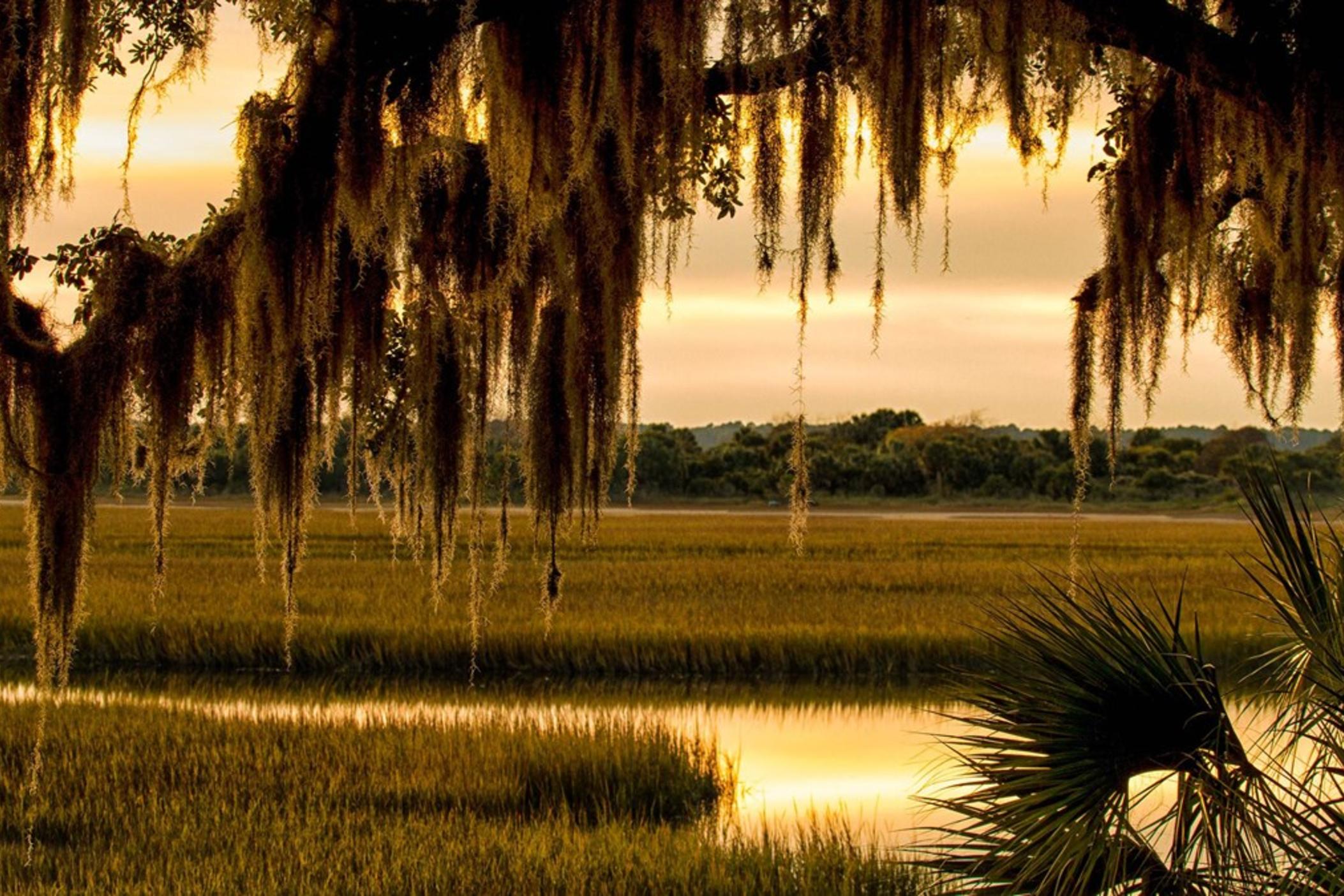Section Branding
Header Content
An insurance policy for coastal Georgia's salt marshes? Conservationists are considering it
Primary Content
LISTEN: A new study looks at how insurance might help save coastal Georgia's salt marshes. GPB's Benjamin Payne reports.
____________________
Cars. Pets. Homes. Health. There are many things in life that an insurance policy can cover (including life itself). But what about the environment — specifically, salt marshes?
Between their ability to protect against flood damage, limit erosion and filter water, these fragile ecosystems of meandering creeks and swampy grasslands — a hallmark of coastal Georgia — provide a plethora of services to society.
“If we can quantify that, that's when we can really start to explore innovative funding solutions for protecting and restoring that marsh — one of those potentially being insurance,” said Liz Fly, an ocean conservationist at The Nature Conservancy.
The nonprofit is partnering with the University of Georgia on a new study aimed at appraising the value of salt marshes and determining whether insurance could shore up these protective shorelands — which could use some protection themselves: according to The Nature Conservancy, experts estimate that 70% of salt marshes have already been lost, primarily due to development.
Factor in the future threats of sea-level rise caused by climate change, and the study has taken on an added urgency.
“Looking at this project, it's about how can our coastal marshlands continue to play this important, critical service of risk reduction during storms into the future as a nature-based solution to that climate change?” said Ashby Worley, who directs The Nature Conservancy's coastal climate adaptation efforts.
Environmental insurance might sound like a new concept, but it's been used in recent years for coral reefs along the Yucatán Peninsula in Mexico.
Like salt marshes, reefs break up heavy waves. But, Fly said, “Salt marshes are not quite the same as coral reefs, in terms of running out and gluing a piece of coral back onto a damaged reef right after storm surge.”
So, an insurance policy for salt marshes could bolster the existing ecosystem “in more of a proactive sense than a reactive sense,” said Matt Bilskie, an engineering professor at the University of Georgia who is involved with the study.
It could also fund the creation of new, artificial salt marshes designed to mimic nature, Bilskie said: “We have to have a certain type of sediment. We have to know where it should be placed to have maximum benefit, what type of plants should be planted there, [to] make sure it's not going to just disappear in a couple of years or 10 years or something — make sure it has some lifespan.”
Of course, all of this comes down to whether it makes economic sense.
“The insurance industry — their own interests have to be met,” said Yukiko Hashida, an environmental economist at the University of Georgia who is working on the study. “They have their own shareholders and stakeholders. I'm interested in what they need, what they get out of this.”
It will take some time to figure out whether salt marshes would be worthwhile risks for the insurance industry, since the study is set to last two years. But there may be options outside of the private sector.
For example, in the case of the Mexican coral reefs, the insurance is managed by a public trust. And unlike your typical kind of insurance — which only pays out when something gets catastrophically damaged — it uses what's called parametric insurance; when certain milder parameters are met — in this case wind speed clocking in above 100 knots — the payouts begin.
“We don't know for sure how this insurance is going to look, so that's part of this feasibility study,” Hashida said.
If insurance is deemed to be a good fit, the researchers hope to apply their findings across the country. But it all begins with Georgia, home to an estimated one-third of all salt marshes on the East Coast, according to UGA.
“We've got a lot to learn,” Worley said. “We've got a framework that's built out, based on what [The Nature Conservancy] has been involved with in Florida with mangrove systems and Latin America with coral reefs. So, can Georgia's salt marshes play a similar role with insurance? We'll see.”


